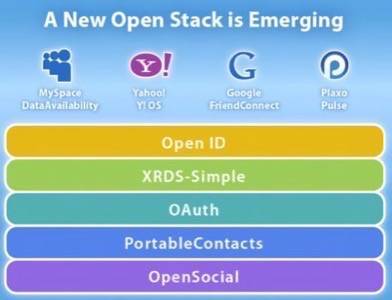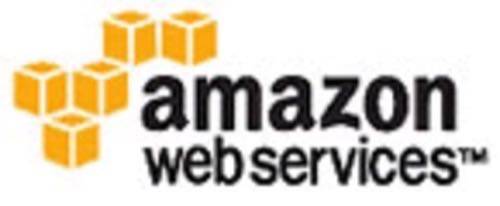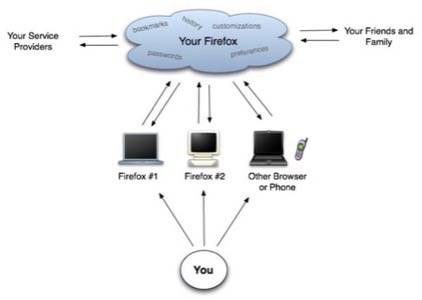2008 has seen a proliferation of new Web platforms, including a few major ones built using open standards. In this final instalment of our series of top products of 2008, we choose the top 10 Web platforms of the year.

We’ve written a lot of times about platforms for the Web. A web platform can be as simple as an API, like the one offered by Twitter, which allows external developers to tap into a company’s data. It can be software and services, like Amazon’s Web Services. It can also be a fully fledged development platform, such as iPhone SDK and Adobe AIR. Whatever the case, platforms on the Web mean allow people to build on top of another company’s product, so we think it’s an appropriate way to close our Top Web Products series.
This is the tenth and final post in ReadWriteWeb’s series of top products of 2008. Here are the previous nine:
- Top 10 Semantic Web Products of 2008
- Top 10 International Products of 2008
- Top 10 Consumer Web Apps of 2008
- Top 10 RSS and Syndication Products of 2008
- Top 10 Mobile Web Products of 2008
- Top 10 Enterprise Web Products of 2008
- Top 10 Real World Web Apps of 2008
- Top 10 Digital Lifestyle Products of 2008
- Top 10 Alternative Search Engines of 2008
Note: unlike some of our previous lists, we’ve attempted to order this one according to impact in 2008.
1. iPhone SDK
ReadWriteWeb named Apple as our Best BigCo of 2008, largely due to the iPhone platform. The iPhone truely reached a mainstream audience in 2008, when the 3G iPhone was launched to much acclaim in July. But more significant than the phone itself was the simultaneous launch of the Apple App Store. There were 552 applications available at launch and at time of writing that’s risen to over 10,000 applications. So in less than 6 months, the number and variety of iPhone apps has expanded greatly. Indeed, any startup worth its salt has an iPhone version of its web app – the ultimate proof of a successful Web platform.

For many years now everybody (including us) has been predicting that the next year will be the one that the Mobile Web breaks through. 2008 was finally that year – and it’s mostly thanks to the iPhone development platform.

2. OpenSocial
November was the first anniversary of Google’s OpenSocial, an open API framework for social networks and websites. During 2008 OpenSocial gained a lot of traction; statistics released in November stated that OpenSocial had reached 675 M registered users at that time and there were 7,500 applications.

Most impressive is the list of organizations who signed onto OpenSocial and are actively developing apps for it. That high powered list includes MySpace, AOL, Bebo, hi5, LinkedIn, Ning, Orkut, Yahoo!. Of course still missing from OpenSocial are Facebook and Microsoft, but at the rate OpenSocial is ramping up – they may not need them.

3. Adobe AIR
As we noted in our Best BigCo 2008 post, this was a year in which Adobe’s ‘Rich Internet App’ strategy bore some juicy fruit, with many compelling apps released that were built using AIR (Adobe Integrated Runtime). AIR is a platform that makes it easy to build attractive Internet connected applications that live outside the browser. Last year we noted its potential – AIR was called ‘Apollo’ for much of its beta – but in February 2008 AIR was officially launched and soon we saw a lot of stunning apps emerge. For examples, check out:

- 6 Adobe AIR Apps to Check Out
- 10 Adobe AIR Apps Bloggers Will Love
- Adobe AIR Goes to Work: 6 Apps for the Corporate Desktop
We’ve named it our number 3 Web platform of the year, because it breathed new life into Rich Internet Apps this year.
4. Twitter API
The importance of Twitter’s API to its success this year can’t be overstated. The number and variety of Twitter reader clients alone is amazing, let alone the many other ways Twitter’s data is being used (e.g. for e-commerce purposes). It must be said that Twitter has experienced much downtime and many technical glitches throughout the year, but even so it has continued to expand its API service. As Twitter co-founder Biz Stone said a ReadWriteTalk interview last September:

“The API has been arguably the most important, or maybe even inarguably, the most important thing we’ve done with Twitter. It has allowed us, first of all, to keep the service very simple and create a simple API so that developers can build on top of our infrastructure and come up with ideas that are way better than our ideas …
So the API, which has easily 10 times more traffic than the website, has been really very important to us. We’ve seen some amazing work built on top of it from tiny little mobile applications like an SMS timer that just allows you to set a reminder over SMS to call your mom or something like that, to more elaborate visual recreations of Twitter like twittervision.com, which shows an animated map of the world and what everyone’s doing around the world with Twitter. … The [Twitter] API has really been a big success for us, and it’s something that we want to continue to focus our efforts on, looking forward.”

5. Facebook Platform
Facebook continued to become more popular throughout 2008, reaching 140 million active users by end of the year and growing at a rate of 600,000 users each day. For that reason we gave it an honorable mention in our Best BigCo 2008 post.

However in terms of the Facebook platform, overall we felt that Google’s OpenSocial overshadowed it in 2008. As we wrote in our mid-year review, Facebook Platform: The Fanfare Revisited, when the Facebook platform debuted last year it was touted as the next big thing.
You no longer needed to bring the audience to your app. Instead your app could be
delivered to one of the largest audiences around the web. And not just delivered,
but injected into a massive social network. But while it started great, it turns out things are not that simple. Three fundamental issues
surfaced:
- Technical: Should the app be just a teaser that leads users to
their site or should it be a duplicate and have full functionality? - Business: If e.g. New York Times builds a Facebook app, will it be economic for them (since there’s little revenue in Facebook)?
- Provider costs: Does it pay for Facebook to maintain the platform? As a business
with a huge valuation, Facebook needs to maximise profit.
Despite these issues, Facebook’s platform shows no signs of slowing and many startups have ported their web apps to Facebook. It may not be the bee’s knees anymore, but it’s still a very effective platform for startups to utilize.
6. Android
Google’s open mobile OS platform, Android, burst onto the scene this year as a rival to Apple’s closed iPhone platform. Google spent a lot of time this year encouraging developers to create applications for Android – and rewarding them for doing so with cold, hard cash with the Android Developer Challenge (see our previous coverage here). This led to many third party apps and multiple App Stores. The first Android phone – the “T-Mobile G1 With Google” – was launched in September, followed by a second Blackberry-like phone in December. Android apps are showing steady growth and we can expect to see this ramp up in 2009 as more handsets come on the market.

Android went open source in October, which starkly set Google apart from Apple’s controlled platform. While iPhone was our top platform in 2008, Google has the opportunity to challenge for this mantle next year.
7. Amazon Web Services
Amazon’s leading edge Web Services stack was first introduced to the world in 2006 and it continued to impress in 2008 – albeit with more of a business focus. Amazon Web Services basically became a more mature offering in ’08 and it shored up its support services.

Amazon Web Services, led by Simple Storage Service (S3) and Elastic Compute Cloud (EC2), was the first major cloud computing platform and today it powers the backend for many startups. At the beginning of the year we noted that Amazon’s web services now accounts for more bandwidth than all of Amazon’s global web sites combined. Then in April, Amazon announced premium for-pay support packages for some of its core infrastructure services. S3, EC2 and Simple Queue Service (SQS) each received the gold and silver level support treatment. In October Amazon announced that EC2 was coming out of beta and that it now supported Windows Server 2003 and Microsoft SQL Server (i.e. expanding beyond Linux distributions and OpenSolaris). At the same time Amazon offered a Service Level Agreement for EC2 and promised an availability of 99.95%.
8. Live Mesh
The Live Mesh service launched in April as an invite only “technology preview”. It is Microsoft’s attempt to tie all of our data together. Live Mesh synchronizes data across multiple devices (currently just Windows computers, but theoretically it will extend to mobile and other devices in the future) as well as to a web desktop that exists in the cloud. It can sync data across devices used by a single users, as well as create shared spaces for multiple users.

Essentially, Live Mesh is a collection of feeds (which can be expressed as ATOM, JSON, FeedSync, RSS, WB-XML, or POX). Every piece of data entered into a user’s Mesh — be it a file, a folder, a message, a user permission, or a new device — is rendered as a piece of information in a feed. The feeds are then synced with other devices that are part of that Mesh following rules for how to sync each particular piece of information (i.e., File A may sync with Users 1, 2, and 3, while File B may only be told to sync with Users 1 and 2).
9. Fire Eagle
Earlier this year Yahoo announced that the closed beta period for its location platform Fire Eagle had ended and that the service was now open for everybody. A number of high-profile services, including Brightkite, Movable Type, Dopplr, and Pownce have implemented Fire Eagle through the numerous APIs Yahoo provides for accessing the service.

As we wrote about Fire Eagle when the beta was first announced, it offers API kits in five different programming languages, it’s got user authorization protocols already available for web, desktop and mobile apps and it’s using the open standards community built oAuth to facilitate faster, more secure mashups. So this platform is leveraging universal open standards.
Note: also see our coverage of the Yahoo! Internet Location Platform, a collection of in-depth geo-location based APIs.

10. Mozilla Weave
This year Mozilla announcedWeave, a new web platform that will store users’ browser metadata in a cloud environment for access anywhere. Weave is a “framework for services integration” that will, according to Mozilla, “focus on finding ways to enhance the Firefox user experience, increase user control over personal information, and provide new opportunities for developers to build innovative online experiences.”

The basic idea is that browser metadata (things stored in your Firefox profile like bookmarks, history, RSS feeds, usernames and passwords, etc.) is pushed into the cloud and stored on Mozilla’s servers. The data is available to users from wherever they get online and users can share information with friends, family, or third parties while retaining control over how, when, and if the info is shared.

Unlucky Not to Make Top 10
There were many other Web platforms that impressed us during the year. Google’s Chrome browser is highly promising (but we felt it was too early to be in the top 10), Google Gears helped take the online world offline, meebo created an intriguing platform based on its core IM capabilities, Bungee Labs developed a great mashups platform, Salesforce.com had a strong year again, and on and on. It seems like every major Internet company nowadays has a platform, which is great for developers and users alike. Check out our earlier post listing 10 promising web platforms for other examples.
We hope you agree with our top 10 list, but we’re sure there are one or two platforms you think should be here instead. So let us know in the comments.
Also for more about the theory and practice of platforms, check out these RWW posts:










